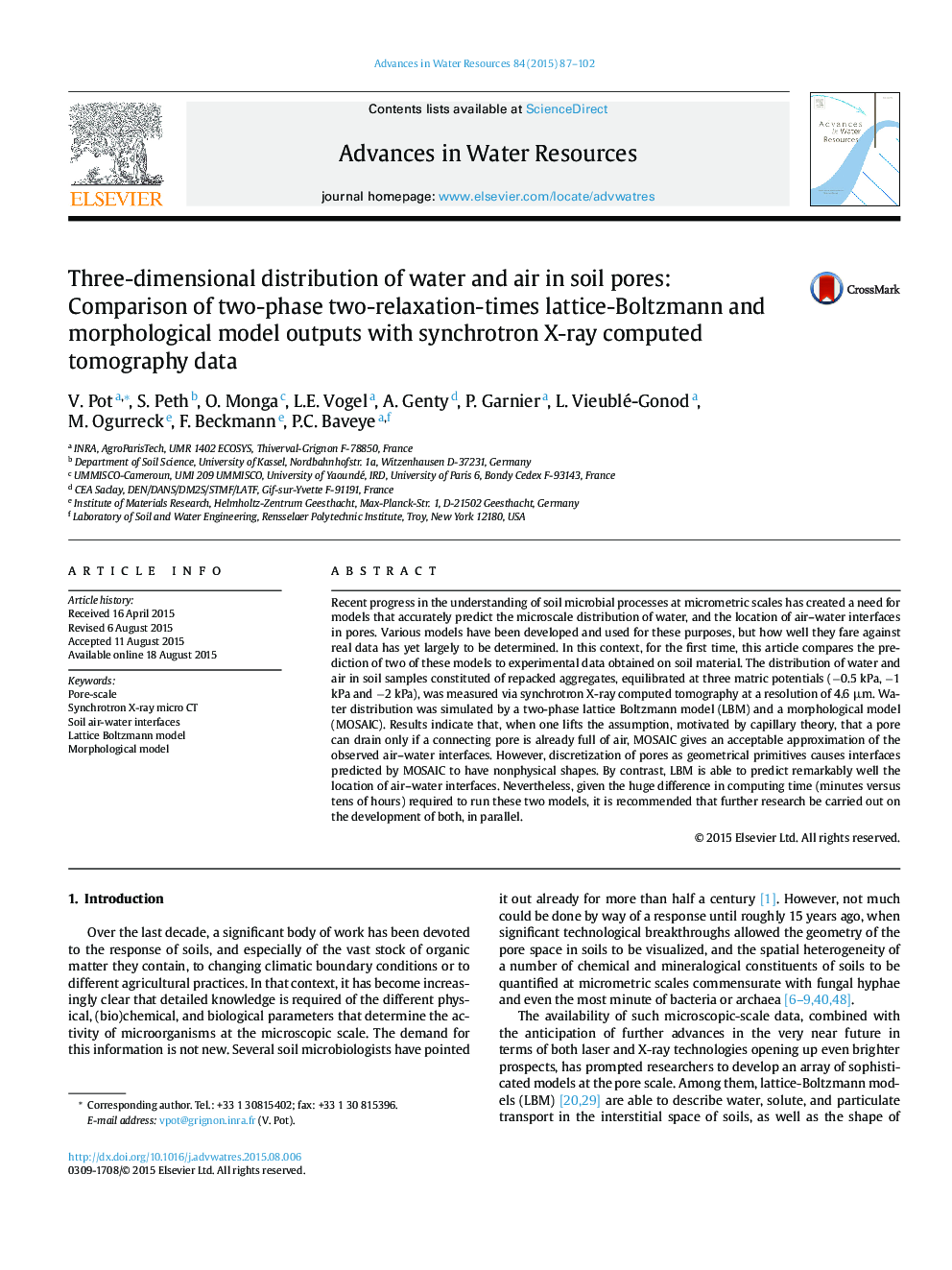| کد مقاله | کد نشریه | سال انتشار | مقاله انگلیسی | نسخه تمام متن |
|---|---|---|---|---|
| 4525291 | 1625625 | 2015 | 16 صفحه PDF | دانلود رایگان |
• New experimental data set of 3D images of air–water interfaces in a soil.
• Remarkably accurate prediction of air–water interfaces by the two-phase LBM.
• Acceptable prediction of air–water interfaces by the morphological MOSAIC model.
Recent progress in the understanding of soil microbial processes at micrometric scales has created a need for models that accurately predict the microscale distribution of water, and the location of air–water interfaces in pores. Various models have been developed and used for these purposes, but how well they fare against real data has yet largely to be determined. In this context, for the first time, this article compares the prediction of two of these models to experimental data obtained on soil material. The distribution of water and air in soil samples constituted of repacked aggregates, equilibrated at three matric potentials (−−0.5 kPa, −−1 kPa and −−2 kPa), was measured via synchrotron X-ray computed tomography at a resolution of 4.6 µm. Water distribution was simulated by a two-phase lattice Boltzmann model (LBM) and a morphological model (MOSAIC). Results indicate that, when one lifts the assumption, motivated by capillary theory, that a pore can drain only if a connecting pore is already full of air, MOSAIC gives an acceptable approximation of the observed air–water interfaces. However, discretization of pores as geometrical primitives causes interfaces predicted by MOSAIC to have nonphysical shapes. By contrast, LBM is able to predict remarkably well the location of air–water interfaces. Nevertheless, given the huge difference in computing time (minutes versus tens of hours) required to run these two models, it is recommended that further research be carried out on the development of both, in parallel.
Journal: Advances in Water Resources - Volume 84, October 2015, Pages 87–102
